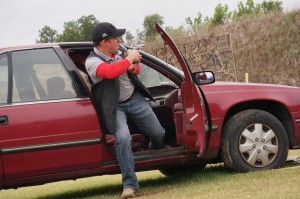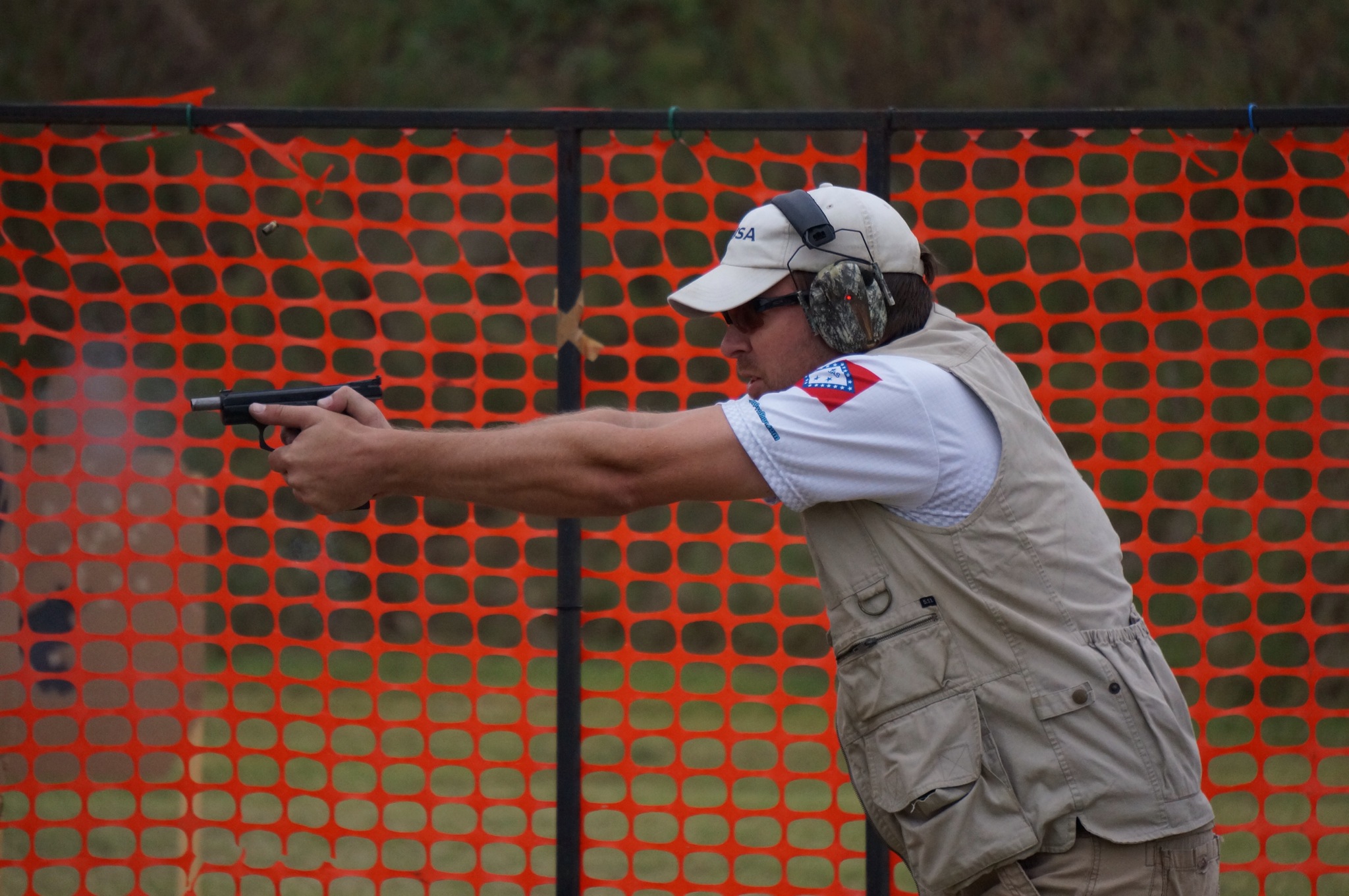Over on pistol-forum, there is a thread discussing the concept of the “command shot/break” with regard to pistol shooting. This is based around the idea that there are times when you want to make the gun go off RIGHT NOW as opposed to the more classic “surprise break.” An example of this would be shooting a swinger in USPSA, there will be a point where the target has an optimal presentation, and you need to shoot it when it’s there.

The surprise break is one of the fundamental concepts of marksmanship – it’s how we teach new shooters to shoot without a flinch, for example. It works best with SFA or SAO pistols, but can be able to TDA and DAO guns as well. The idea is that you pull the trigger with constant, steady pressure until the gun goes off. There shouldn’t be a conscious decision to shoot RIGHT NOW with a surprise break, as with most new shooters this is the sort of the thing that will induce flinch and trigger jerk.
But what about more advanced shooters? The idea of a command break, where you do want to shoot the gun right freakin’ now is actually valuable, and it’s an important skill to develop. It builds on the fundamentals of the surprise break, in that you’ve ideally gotten to the point where you can pull a trigger smoothly without disturbing the sights. The big difference between a surprise break and a command break is that you’re making a choice to fire the pistol immediately at an available target, and must pull the trigger as quickly as possible to the rear, without disturbing the sights.
This is a skill that can be practiced extensively in dry fire, and is especially important if you’re shooting a DA revolver, for example. The drill to practice this is simple: aim the unloaded gun at a target of fixed size. Pull the trigger as fast as you can without disturbing the sights off the target zone. Do that same speed for five reps. Now do it faster for five more reps. Repeat until awesomeness achieved. It’s also fairly easy to work on at the range. I don’t normally advocate shooting on a cadence, but for this drill it helps to count in your head: “1…2…3…shoot…1…2…3…shoot” based on whatever pace you’re looking for.
Mastering command fire is an important skill for competition shooters and self-defense shooters alike. I’ve had many situations in matches where I’ve needed to hit a target before it went away; as I’ve gotten better at this drill my ability to make those shots has increased. Give a try at the range and in dry fire when you can.

I have never thought about it as an either/or but a continuum. Do you think there is a benefit in thinking of it as an either/or?
I never liked the term surprise break. It is only an abstract concept. Whether I pull the trigger slowly or quickly I know the gun is going to go bang, so it can’t be a surprise unless I’m really dumb. I just need to learn not to care when it goes off. I like to talk about it as learning to feel the tension in your body (grip being the most important.) While pressing the trigger don’t change that tension. Let it stay the same. It’s saying the same thing but seems easier for some people to grasp.
At first everything must be slow because I am untrained. As I get a smoother trigger press I change it’s speed depending on the target distance/size. As my grip improves that same speed changes again relative to the same target.
So not only do I have a different speed/control of the trigger depending on the distance/size but that same speed changes over my shooting career as my ability improves (i.e. grip, stance, focus, etc.)
So a long winded way of saying everything is a command shot with the proof of controlling that command being, did I hit the target?
I’ve had some success at flat-out, pushing-the-envelope speed shooting by taking a slightly different approach: as soon as I see an acceptable sight picture on my target, that becomes the “green-light” for me to hit the trigger NOW, as a sort of sped-up Pavlovian reflex. Of course, my grip and stance have to be spot-on to compensate for slapping the trigger like that, but my personal best performance was 6 A-zone hits on a standard IPSC target with my Glock 19 in 2 seconds at 4 yards, from both left-hand-only Low Ready and right-hand-only from the holster.
Additional caveat: this technique should not be used in scenarios or stages where the shooter is required to positively ID targets and discriminate between shoot- and no-shoot-targets, lest he fire prematurely on the wrong target…
My S & W .45 acp Target rev. has 2 very light distinctive feels.. One half way through the long DA trigger pull, and another just before the hammer falls. Can do it in Da if firing one round after the other slow and deliberate. It also has a click, click sound when practiceing trigger control while dry firing in a , of course quiet environment. Rapid fire and forget about that either way. The first one is great for target shooting slow and deliberate and for hunting. But not for Critical Defense (I wish it was)!. If I could perfect that I could join the Olympics–that reminds me of another story–Oh, forget it.
A free metronome app can help, too.
Surprise break shouldn’t ever apply to pistol shooting, well except maybe shooting off bags for groups. The goal is to know your pistol will fire, know where the sights are when it fires, and not hit a 4 lb trigger with 25 lbs of force and ruin the sight picture you had.
You nailed it. Im a devotee of snap shooting. A skill that Shotgun shooters pick up right away. Trap shooters have it; good Skeet shooters develope it quickly, or, get off of the path.